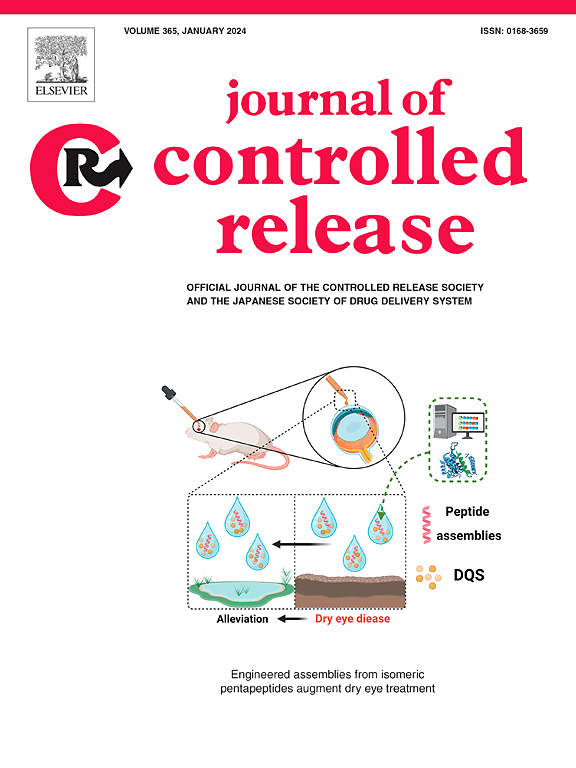Blood-brain barrier crossing biopolymer targeting c-Myc and anti-PD-1 activate primary brain lymphoma immunity: Artificial intelligence analysis
IF 10.5
1区 医学
Q1 CHEMISTRY, MULTIDISCIPLINARY
引用次数: 0
Abstract
Primary Central Nervous System Lymphoma is an aggressive central nervous system neoplasm with poor response to pharmacological treatment, partially due to insufficient drug delivery across blood-brain barrier. In this study, we developed a novel therapy for this lymphoma by combining a targeted nanopolymer treatment with an immune checkpoint inhibitor antibody (anti-PD-1).
A N-(2-hydroxypropyl)methacrylamide copolymer-based nanoconjugate was designed to block tumor cell c-Myc oncogene expression by antisense oligonucleotide. Angiopep-2 peptide was conjugated to the copolymer to facilitate nanodrug crossing of the blood-brain barrier. Systemically administered polymeric nanodrug, alone or in combination with immune checkpoint inhibitor antibody anti-PD-1, was tested in syngeneic mouse model of A20 intracranial brain lymphoma. There was no significant survival difference between saline- and free anti-PD-1-treated groups. However, significant survival advantage vs. saline was observed upon treatment with nanodrug bearing Angiopep-2, H6 (6 histidines for endosome escape), and c-Myc antisense alone and especially when it was combined with anti-PD-1 antibody. Animal survival after combined treatment was also significantly increased vs. free anti-PD-1. Artificial Intelligence-assisted analysis of gene expression database after RNA-seq of tumors was used to find novel immune pathways, molecular targets and the most effective multifunctional drugs together with future drug prediction for brain lymphoma in vivo model. Spectral flow cytometry and RNA-seq analysis revealed a robust activation of tumor infiltrating T lymphocytes with enhanced interferon γ signaling and polarization to M1-type macrophages in treated tumors, which was confirmed by immunofluorescence staining.
In summary, a new effective blood-brain barrier crossing nano immuno therapeutic system was developed that effectively blocked tumor c-Myc acting in combination with immune checkpoint inhibitor anti-PD-1 to treat primary brain lymphoma. The treatment improved survival of tumor-bearing animals through activation of both the adaptive and innate immune responses.


求助全文
约1分钟内获得全文
求助全文
来源期刊

Journal of Controlled Release
医学-化学综合
CiteScore
18.50
自引率
5.60%
发文量
700
审稿时长
39 days
期刊介绍:
The Journal of Controlled Release (JCR) proudly serves as the Official Journal of the Controlled Release Society and the Japan Society of Drug Delivery System.
Dedicated to the broad field of delivery science and technology, JCR publishes high-quality research articles covering drug delivery systems and all facets of formulations. This includes the physicochemical and biological properties of drugs, design and characterization of dosage forms, release mechanisms, in vivo testing, and formulation research and development across pharmaceutical, diagnostic, agricultural, environmental, cosmetic, and food industries.
Priority is given to manuscripts that contribute to the fundamental understanding of principles or demonstrate the advantages of novel technologies in terms of safety and efficacy over current clinical standards. JCR strives to be a leading platform for advancements in delivery science and technology.
 求助内容:
求助内容: 应助结果提醒方式:
应助结果提醒方式:


